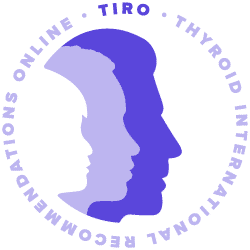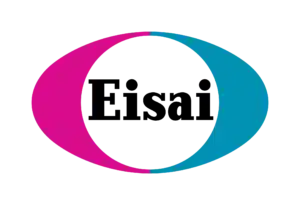Diagnostic Procedures
Clinical Outline
= Primers in Thyroidology
= Journal Club Presentation
= Case-based Discussion (inc. roundtables)
= Grand Rounds Lectureship
Management Recommendations
Introduction
Anaplastic thyroid cancer (ATC) is a unique and highly lethal malignancy arising from follicular cells in the thyroid gland. It is the least common of the recognized thyroid cancers with an incidence of 1.7% in the United States and as high as 9.8% elsewhere in the world. The lethality of ATC is reflected in its reported median survival of 5 months. The AJCC considers all ATC to be stage IV.
Supplemental Educational Content
New Guidelines for Anaplastic Thyroid Cancer
Presenter: Electron Kebebew, MD
Summary
As second author on the guidelines, Dr. Kebebew explained the details regarding the most recent anaplastic thyroid cancer guidelines. This included the guiding principles of managing anaplastic thyroid cancer patients, as well as the important definitions and classifications, treatment options, and updated recommendations for optimal practice.
- This week, we were honored to welcome Dr. Electron Kebebew, the chief of general surgery at Stanford University. He was also the first chair of the endocrine oncologic surgery branch of the NIH. He has published over 400 scientific research articles.
- As second author on the guidelines, Dr. Kebebew explained the details regarding the most recent anaplastic thyroid cancer guidelines. This included the guiding principles of managing anaplastic thyroid cancer patients, as well as the important definitions and classifications, treatment options, and updated recommendations for optimal practice.
- Updating these guidelines was critical, as it had been 9 years since the last anaplastic-specific update, despite the fact that the American Thyroid Association expects updates every 5 years.
- Above all, it is essential that the care involves the rapid coordination of a multidisciplinary team of surgeons, radiation and medical oncologists, endocrinologists, and palliative care teams. Time is of the essence in the evaluation and treatment.
- Patients are encouraged to draft an Advance Directive in which they name a surrogate decision maker and other end-of-life preferences.
- Given the poor overall prognosis of anaplastic thyroid cancer, morbid radical procedures should be avoided.
1. Diagnosis of Anaplastic Thyroid Carcinoma (ATC)
A. Clinical Factors That May Heighten the Suspicion of a Diagnosis of ATC
- Older patients
- Large tumors
- Symptomatic masses
- Rapid growth
B. Fine Needle Aspiration Biopsy
Fine needle aspiration biopsy should be performed as the initial diagnostic test, but a core biopsy may be needed to characterize the tumor fully (including distinction from other malignancies such as poorly differentiated thyroid carcinoma, MTC, lymphoma, sarcoma, and metastatic carcinoma) and to obtain adequate material for molecular analysis.1–3
C. Additional Procedures That Help Diagnosis
Based on the yield of cells, ATC can be diagnosed by FNA in roughly 60% of cases. Core biopsy or open biopsy may be necessary to confirm a diagnosis. The presence of necrosis may make the diagnosis challenging.
D. Histopathological Features Characteristic of ATC
- Undifferentiated cells with marked pleomorphism.
- Rapid proliferation.
- High mitotic rates (> 1 mitosis/High Power Field [HPF]).
- Ki-67 proliferation index > 30%.
- Areas of necrosis.
- All ATC are considered “high grade.”
ATC may arise in association with well differentiated thyroid cancer and so adequate tissue sampling is essential to establish a diagnosis.
Tables & Figures
Table 16. Panel of Routine Immunohistochemical Markers
IHC Marker
Pan-cytokeratins
| DTC | +++ |
| PDTC | +++ |
| ATC | +++/– |
| MTC | +++ |
| SCC | +++ |
| Lymphoma | – |
Thyroglobulin
| DTC | +++ |
| PDTC | +/– |
| ATC | – |
| MTC | – |
| SCC | – |
| Lymphoma | – |
Thyroid-transcription factor 1
| DTC | +++ |
| PDTC | +/– |
| ATC | –/+ |
| MTC | +/– |
| SCC | – |
| Lymphoma | – |
BRAFV600E
| DTC | +/– |
| PDTC | –/+ |
| ATC | –/+ |
| MTC | – |
| SCC | – |
| Lymphoma | – |
PAX8
| DTC | +++ |
| PDTC | +++ |
| ATC | +/– |
| MTC | +/– |
| SCC | – |
| Lymphoma | +/–a |
Ki-67b
| DTC | < 5% |
| PDTC | 5–30% |
| ATC | > 30% |
| MTC | < 20% |
| SCC | > 30% |
| Lymphoma | variable |
Chromogranin
| DTC | – |
| PDTC | – |
| ATC | – |
| MTC | +++ |
| SCC | – |
| Lymphoma | – |
Calcitonin
| DTC | – |
| PDTC | – |
| ATC | – |
| MTC | +++/– |
| SCC | – |
| Lymphoma | – |
Carcinembryonic antigen
| DTC | – |
| PDTC | – |
| ATC | – |
| MTC | +++ |
| SCC | – |
| Lymphoma | – |
p53
| DTC | – (rare +) |
| PDTC | –/+ |
| ATC | +/– |
| MTC | – |
| SCC | +/– |
| Lymphoma | +/– |
CD45, other lymphoid markers
| DTC | – |
| PDTC | – |
| ATC | – |
| MTC | – |
| SCC | – |
| Lymphoma | +++ |
“+” = relative positive staining; “–” = negative staining; “+/–” = variable positivity.
a PAX8 antibodies can cross-react with PAX5, which is expressed in lymphoid cells.
b Percentage of nuclei positive for Ki-67.
DTC = differentiated thyroid cancer; IHC = immunohistochemistry; MTC = medullary thyroid cancer; PDTC = poorly-differentiated thyroid cancer.
2. Differential Diagnosis of ATC from Poorly Differentiated Thyroid Cancer (PDTC)
The determination of a diagnosis of ATC is critical to management decision making and should be established prior to surgical resection, which may not be appropriate in light of the highly aggressive nature of this cancer and its propensity to spread.1–4
3. Pathological Analysis of ATC: Role of Intraoperative Frozen Section
A. Reasons to Use Frozen Section Analysis
- To confirm the presence of diagnostic material when an open biopsy is performed.
- To identify the presence of a lymphoma in order to obtain further material for flow cytometry.
- To clear margins when a combined DTC/ATC diagnosis is suspected.
Expedited pathologic assessment is a critical step in establishing a plan of care and informing the patient and the clinical care team as to the nature of the disease and the prognosis. Understanding the biology of the entire tumor, the presence of DTC and the extent to which it is composed of ATC is vital.1
BRAFV600E mutation analysis should be done as quickly as possible by immunohistochemistry and then confirmed by molecular analysis as it will direct therapy. Other mutations include TERT promotor, RAS and TP53.1–3 The role of targeted therapies is rapidly emerging as an important therapeutic option in the management of ATC. The approval by the FDA of therapies against specific mutations has paved the way for this form of treatment which is dependent on molecular profiling of a patient’s cancer.1
The molecular profiling of ATCs early in the workup of patients diagnosed with or suspected of ATC is important to identify if there are specific targetable mutations that can be used in the personalized treatment of those patients.
Tables & Figures
Table 17. Mutations & Clinical Implications.
Mutations
BRAFV600E
Clinical Implications
Commonly seen in DTC which may be precursor to ATC.
Incidence in ATC
40–70% of ATCs and often seen in ATC arising from PTC.
RAS
Clinical Implications
Commonly seen in DTC which may be precursor to ATC.
Incidence in ATC
—
TP53
Clinical implications
Considered late stage in the carcinogenesis process. More commonly found in ATC.
Incidence in ATC
Found in 50–70% of ATC.
TERT
Clinical Implications
Considered late stage in the carcinogenesis process. More commonly found in ATC.
Incidence in ATC
Seen in 65–75% of ATC.
P13K/AKT
Clinical Implications
Considered late stage in the carcinogenesis process.
Incidence in ATC
30–40% of ATC.
EIF1AX
Clinical Implications
Often present with RAS mutations.
Incidence in ATC
—
None of the above mutations, although found in ATCs, is diagnostic for ATC.

Add Upcoming TIROxMDS Seminars to Your Calendar
In 2 quick steps, you can add our entire schedule of upcoming seminars to your calendar today! Then you will get notified of upcoming lectures, presentations and case-based studies. Every Friday at 8:00 AM EST, we cover a new topic from published research.
Add to CalendarReferences
- 1.Haugen BR, Alexander EK, Bible KC, et al. 2015 American Thyroid Association Management Guidelines for Adult Patients with Thyroid Nodules and Differentiated Thyroid Cancer: The American Thyroid Association Guidelines Task Force on Thyroid Nodules and Differentiated Thyroid Cancer. Thyroid. Published online January 2016:1-133. doi:10.1089/thy.2015.0020
- 2.Haddad RI, Nasr C, Bischoff L, et al. NCCN Guidelines Insights: Thyroid Carcinoma, Version 2.2018. J Natl Compr Canc Netw. Published online December 2018:1429-1440. doi:10.6004/jnccn.2018.0089
- 3.Filetti S, Durante C, Hartl D, et al. Thyroid cancer: ESMO Clinical Practice Guidelines for diagnosis, treatment and follow-up. Annals of Oncology. Published online December 2019:1856-1883. doi:10.1093/annonc/mdz400
- 4.Ito Y, Onoda N, Okamoto T. The revised clinical practice guidelines on the management of thyroid tumors by the Japan Associations of Endocrine Surgeons: Core questions and recommendations for treatments of thyroid cancer. Endocr J. Published online 2020:669-717. doi:10.1507/endocrj.ej20-0025






